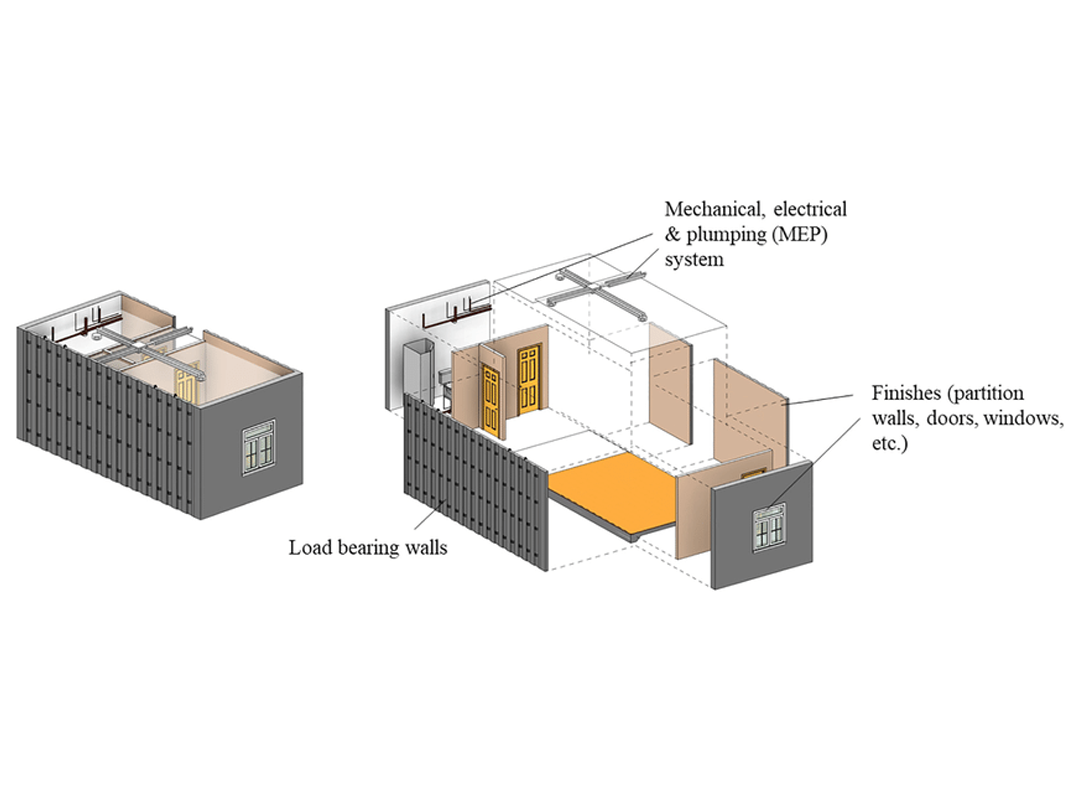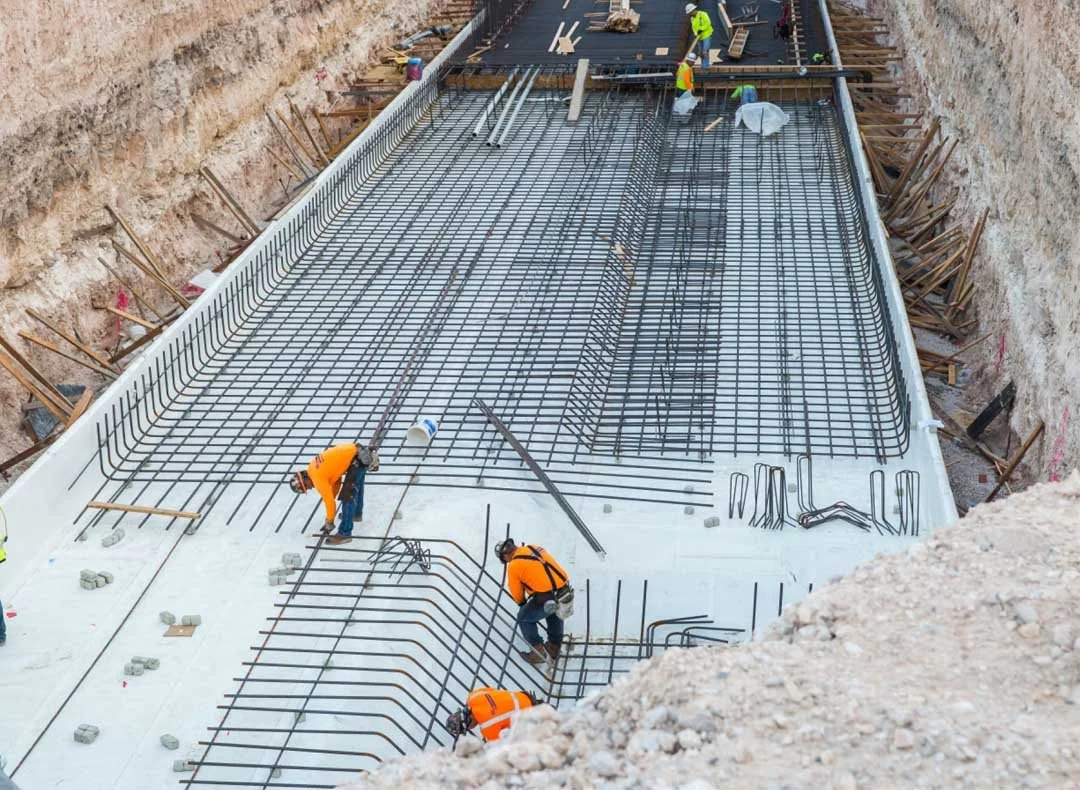Shallow vs Deep Foundations: Analyzing Different Types of Foundations
Why Foundation Choice Matters for Your Building Project
Every building starts with a foundation — but not every building needs the same type. The choice between a shallow and a deep foundation isn’t just a technicality. It affects everything from how stable your structure is to how much you’ll spend and how long construction will take.
A common misconception is that deep foundations are automatically “better” because they go deeper. But that’s not true. It’s really about matching the right system to the right site. Soil conditions, building type, weight, location — all of these play a role. Get it wrong, and you risk cracking walls, uneven floors, or worse. Get it right, and you’ll set your project up for decades of stability and peace of mind.
At Exactus Engineering, we’ve seen how overlooked foundation decisions can lead to costly fixes down the line. That’s why we always start from the ground up — with a clear understanding of the soil, structure, and site conditions — before recommending any foundation solution.
What Are Shallow Foundations?
Shallow foundations are, as the name suggests, built close to the surface. Their job is to spread the building’s load across a wider area of soil near the ground. They’re straightforward, cost-effective, and perfect when the soil near the surface is strong enough to support the structure.
Common types include:
Spread Footings – Concrete pads that support individual columns or walls. Great for light to moderate loads.
Slab-on-Grade – A concrete slab poured directly onto a leveled surface. Often used in residential homes or garages.
Mat (or Raft) Foundations – A thick slab covering the entire footprint of the building, distributing loads across a broad area. Ideal for weak surface soils and large footprints.
When are shallow foundations a good fit?
Residential homes and small commercial buildings
Areas with stable, strong topsoil
Projects with tight budgets or fast timelines
Pros:
Simple and fast to construct
Lower material and labor costs
Easier to inspect and maintain
Limitations:
Not ideal for poor soil conditions or heavy loads
Vulnerable to frost heave in colder climates
Limited depth means less flexibility if site conditions change
What Are Deep Foundations?
Deep foundations transfer a building’s weight far below the surface — sometimes dozens of feet — until they reach solid ground or bedrock. They’re the go-to option when surface soil isn’t strong enough or when structures are tall, heavy, or complex.
Common types include:
Driven Piles – Long columns (usually steel or precast concrete) driven into the ground by force.
Drilled Shafts (Caissons) – Deep holes filled with reinforced concrete. Ideal for large loads.
Pier Foundations – Similar to piles, but constructed by drilling and pouring concrete in place.
When are deep foundations necessary?
High-rise buildings and infrastructure projects
Weak or unstable surface soils
Sites with high groundwater or flood risk
Coastal, seismic, or highly variable environments
Pros:
Excellent load-bearing capacity
Bypass weak or shifting soil
Often essential for safety in large-scale builds
Challenges:
More complex to design and construct
Higher costs for equipment, labor, and materials
Requires detailed geotechnical investigation
Differences between Deep and Shallow Foundations
| Factor | Shallow Foundations | Deep Foundations |
|---|---|---|
| Depth | Near surface (typically <3 meters) | Extends deep into soil/bedrock (can exceed 30 meters) |
| Load Transfer | Distributes load across surface soil | Transfers load to deep, stable strata |
| Best For | Light structures on good soil | Heavy/tall buildings or poor soil conditions |
| Cost | More economical, less labor-intensive | Higher due to complexity and materials |
| Construction Time | Faster to build | Slower, requires specialized equipment |
| Soil Dependence | Requires strong surface soil | Can bypass weak soil entirely |
Understanding these differences early in the design process helps avoid costly redesigns or performance issues later on. There’s no universally “better” option — just the one that’s best for your site and your building.
When Should You Choose a Shallow Foundation?
Shallow foundations are a smart choice when the soil near the surface is strong enough to carry your building’s weight — no need to overcomplicate things when the site conditions work in your favor.
Ideal Conditions for Shallow Foundations:
Good-quality soil in the top few meters
Low-rise or mid-rise buildings (homes, small offices, schools)
Light structural loads that don’t require deep anchoring
Dry sites with minimal risk of high groundwater or flooding
In these situations, shallow systems like spread footings or slab-on-grade offer a straightforward, budget-friendly solution. They're quick to build, easy to inspect, and typically involve less heavy machinery.
Environmental and Budget Considerations:
Fewer materials = lower carbon footprint
Less excavation = faster timelines
Ideal for tight budgets or projects with lean margins.
That said, even shallow foundations require proper soil testing and design. You want to avoid the trap of going “cheap and easy” without verifying site conditions — because if the soil isn’t up to the task, you could face serious settlement or structural issues later on.
📣 Need a shallow foundation design that’s built to last?
Contact Exactus Engineering for expert analysis and cost-effective solutions tailored to your site.
When Should You Choose a Deep Foundation?
Deep foundations come into play when the surface soil simply can’t be trusted to carry the building — either because it’s weak, loose, wet, or unpredictable. In these cases, you have to go deeper to find stability.
Conditions That Call for Deep Foundations:
Poor surface soils (loose sand, clay, organic material)
Heavy structures, such as high-rises, bridges, or industrial buildings
Variable or sloped sites, where loads need to be transferred more evenly
High groundwater levels or risk of soil movement (like expansive clay)
Deep systems like driven piles or drilled shafts anchor the structure into stronger soil layers or even bedrock — and that added complexity is often non-negotiable for safety and code compliance.
Project Types That Rely on Deep Foundations:
Skyscrapers, towers, large warehouses
Marine or coastal buildings
Sites in seismic zones or with frequent freeze-thaw cycles
While more expensive upfront, deep foundations are an investment in long-term durability and risk reduction — especially for buildings with large vertical or lateral loads.
📣 Working on a tall building or complex site?
Exactus Engineering can design the deep foundation system your project needs — with the right balance of performance and efficiency.
Final Thoughts on Foundation Selection
Shallow and deep foundations serve different roles — and choosing the right one depends entirely on your site conditions, building type, and performance goals. The smartest projects don’t just go by rule of thumb — they start with data and experience.
At Exactus Engineering, we dig into the details (literally) before we ever recommend a system. That means:
Soil reports that go beyond surface-level
Designs tailored to real-world load paths and long-term behavior
Coordination with architects and contractors to ensure buildability
📣 Ready to make the right call for your site?
Whether you’re looking to keep it simple with a shallow system or need a deep solution that anchors into rock-solid performance — we’ll help you get it right the first time.
Common Challenges in Foundation Design — and How to Avoid Them
Even the best building plans can run into trouble if the foundation isn’t right. From missed soil warnings to poor load planning, most foundation issues start early — and cost more to fix later.
Here are the most common challenges we see, and how you can avoid them:
✅ 1. Inadequate Soil Testing and Site Analysis
The mistake: Skipping a proper geotechnical report or relying on outdated site data.
The result: Foundations designed on assumptions rather than facts — leading to differential settlement, unexpected groundwater issues, or even structural failure.
The fix: Always start with a full site investigation. At Exactus, we never design blind — we interpret soil reports ourselves and collaborate directly with geotechs to understand what’s really below the surface.
✅ 2. Incorrect Load Assumptions
The mistake: Underestimating structural or live loads, especially on custom buildings or renovations.
The result: Foundations that shift, settle, or fail under the actual stresses they experience.
The fix: Ensure structural loads are based on accurate modeling and building use. Our engineers use real-world load paths and factor in everything from wind loads to future modifications.
✅ 3. Overlooking Environmental Factors
The mistake: Ignoring water tables, freeze-thaw cycles, or seismic risk during early design.
The result: Cracking, heaving, corrosion, or structural fatigue over time.
The fix: We review climate, local conditions, and long-term performance risks before foundation selection. That includes thermal movement, hydrostatic pressure, and regional hazards.
✅ 4. Mismatched Foundation Type to Site
The mistake: Choosing a foundation system based on budget, not site conditions.
The result: Costly retrofits, delays, or performance problems during or after construction.
The fix: We don’t “sell” foundation types — we match solutions to the reality of your site. Sometimes that means a well-designed shallow system. Other times, a deep system is unavoidable. Either way, the recommendation comes from facts, not guesswork.
📊 Visual Guide: Top Foundation Mistakes
(This would be a good spot for an infographic showing the top 3 problems: Poor soil data, load miscalculations, and ignoring environmental factors — plus their costs.)
How Exactus Engineering Helps You Get It Right
Foundation design isn’t a one-size-fits-all service. At Exactus, we treat it like the custom science it is — with careful analysis, technical experience, and collaboration at every step.
Here’s how we support your project from the ground up:
🛠 We design both shallow and deep foundation systems.
No bias — just honest guidance based on site conditions and project goals. Whether it’s a home or a hospital, we tailor the foundation to the structure.
🧠 Every project gets a personalized approach.
We combine field data, code requirements, and our experience to determine the best, most cost-effective solution — not just what’s fastest to draw.
👷♂️ We collaborate with your entire team.
Architects, contractors, surveyors — we speak their language and coordinate seamlessly to ensure that the foundation plan works on paper and on site.
📐 We use advanced tools to validate every decision.
From BIM modeling to load simulations and value engineering, we don’t guess — we test and optimize before construction starts.
📣 Let’s get your foundation right — from day one.
Work with Exactus Engineering to avoid common pitfalls and design a foundation system that supports your structure, your budget, and your peace of mind.
Why Foundation Design Deserves More Attention Than It Gets
In every successful building project, the foundation plays a quiet but crucial role. It doesn’t get the spotlight — but it carries the weight, quite literally.
Choosing between shallow and deep foundations isn’t just a technical decision. It’s about balancing site realities, structural demands, cost, and long-term safety. Get it wrong, and you risk everything above it. Get it right, and you set your project up for decades of reliable performance.
The key? Don’t rely on guesswork or general rules of thumb. Every site is different. Every structure has unique needs. And every decision you make early on affects how smoothly your build goes — and how stable it stays.
That’s why Exactus Engineering takes foundation design seriously.
Why Clients Trust Exactus for Foundation Design
We don’t take shortcuts — we take the time to understand your site and structure.
We design with future performance in mind, not just code compliance.
We collaborate across disciplines to ensure the foundation integrates with your full building plan.
And we do it all with transparency, communication, and a clear focus on your project’s success.
If you’re breaking ground on a home, a warehouse, or a high-rise, we can guide you to the foundation solution that fits best — not just what works on paper, but what makes sense in the real world. Whether it’s a shallow or deep foundation, Exactus Engineering ensures your project has the stability it needs. Contact us to get started.






